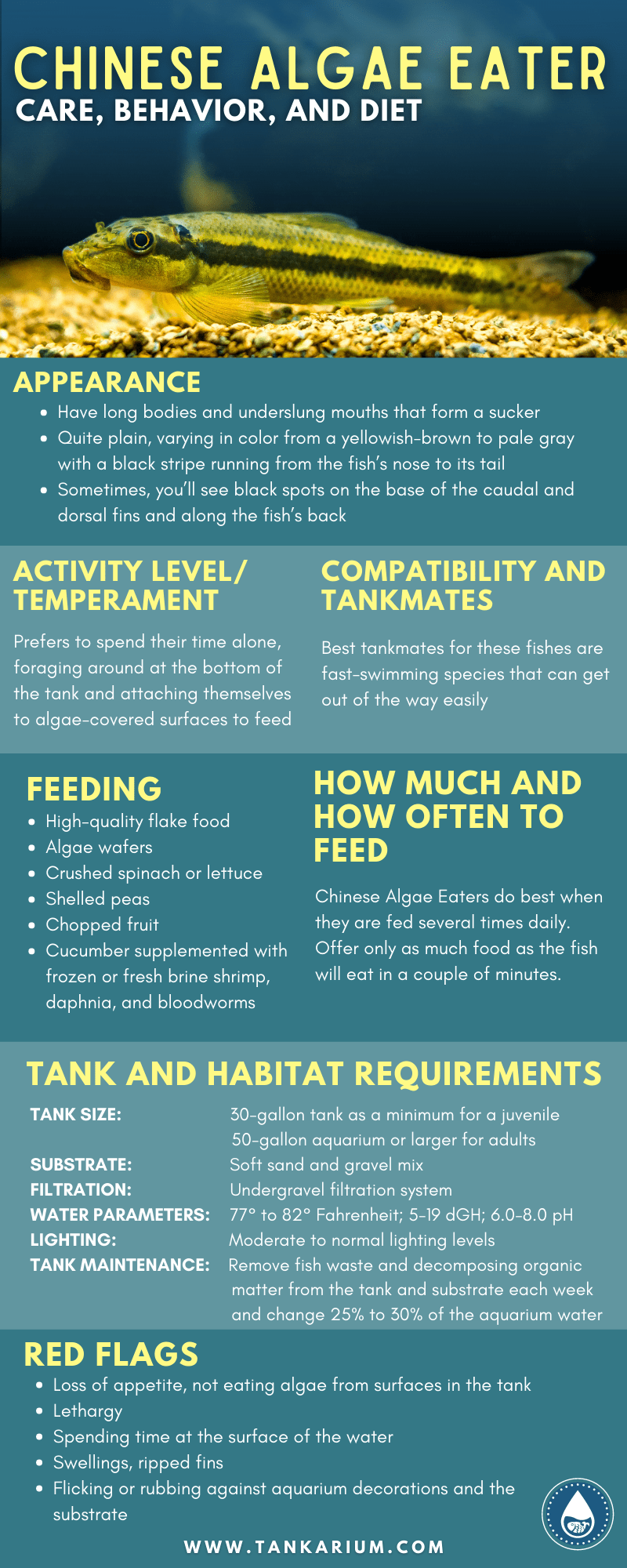Algae is an unsightly invader in the aquarium that can be incredibly difficult to get rid of. That’s where adding a Chinese Algae Eater to your tank can be extremely helpful. These fascinating fish spend much of their time grazing on most algae species that are commonly found growing in home aquariums.
These semi-aggressive, bottom-dwelling fish are very undemanding, making them a good choice for a beginner’s community setup. So, how big do Chinese Algae Eaters get? How do I care for a Golden Algae Eater? What do I feed a Chinese Algae Eater?
Read this guide to find out!
Fish Profile
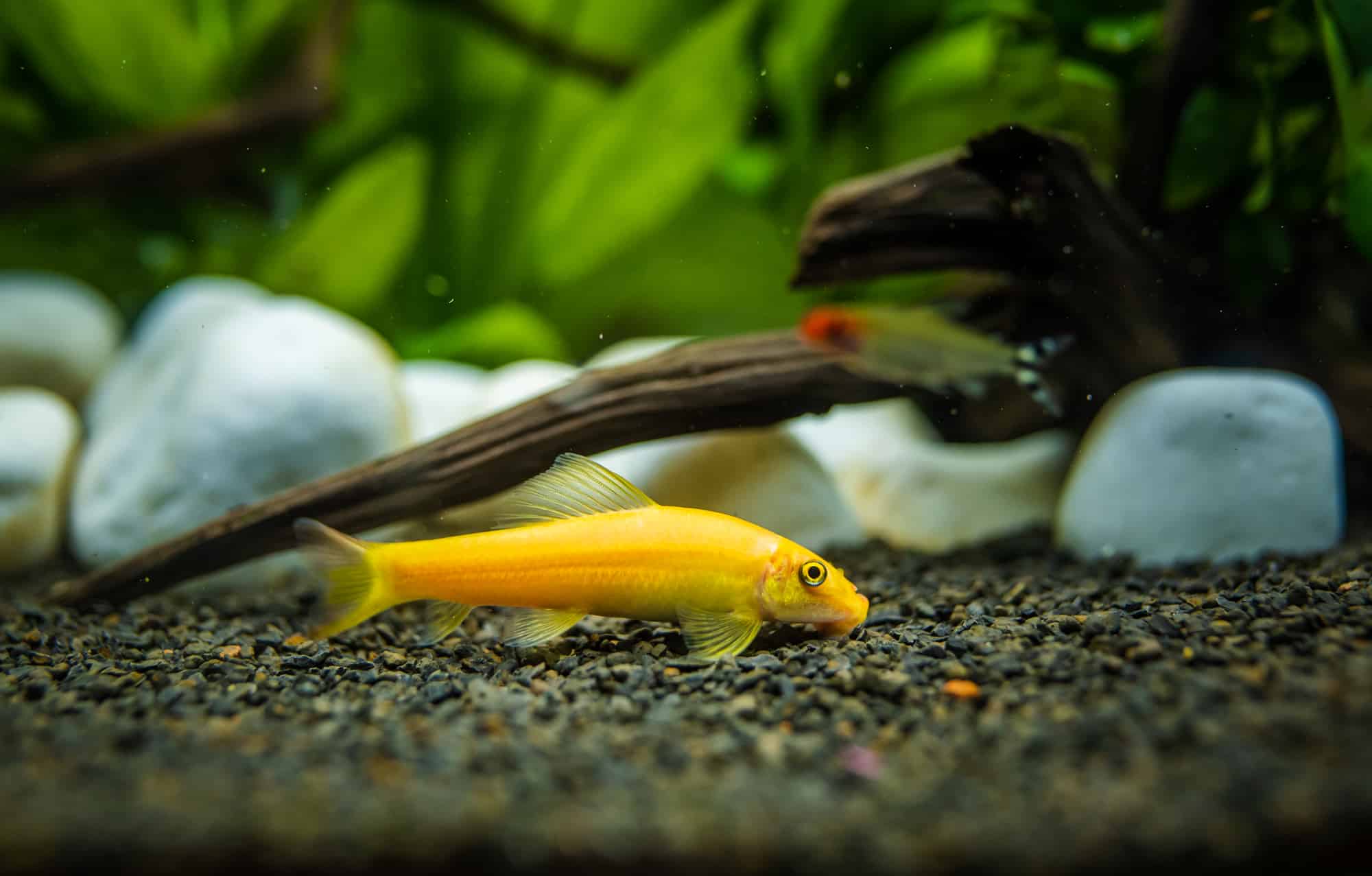
Scientific Name
Gyrinocheilus aymonieri
Common Name (species)
Chinese Algae Eater, Sucking Loach, Sucking Catfish, Honey Sucker
Family
Gyrinocheilidae
Origin
Southeast Asia, Southern China
Diet
Omnivore: Algae, tropical flakes, worms, brine shrimp, daphnia
Care Level
Easy
Activity
Natural loner, bottom-dwelling forager
Lifespan
5 to 10 years
Temperament
Semi-aggressive
Tank Level
Bottom-dweller
Minimum Tank Size
50 gallons
Temperature Range
Tropical 77° to 82° Fahrenheit
Water Hardness
5 – 19 dGH
pH Range
6.0 to 8.0
Filtration/Flow Rate
Prefers well-filtered water and a moderate to strong flow rate
Breeding
Egg layer
Compatibility
Semi-aggressive toward the same species and similar sized fish
OK, for Planted Tanks?
Safe with plants
Origins
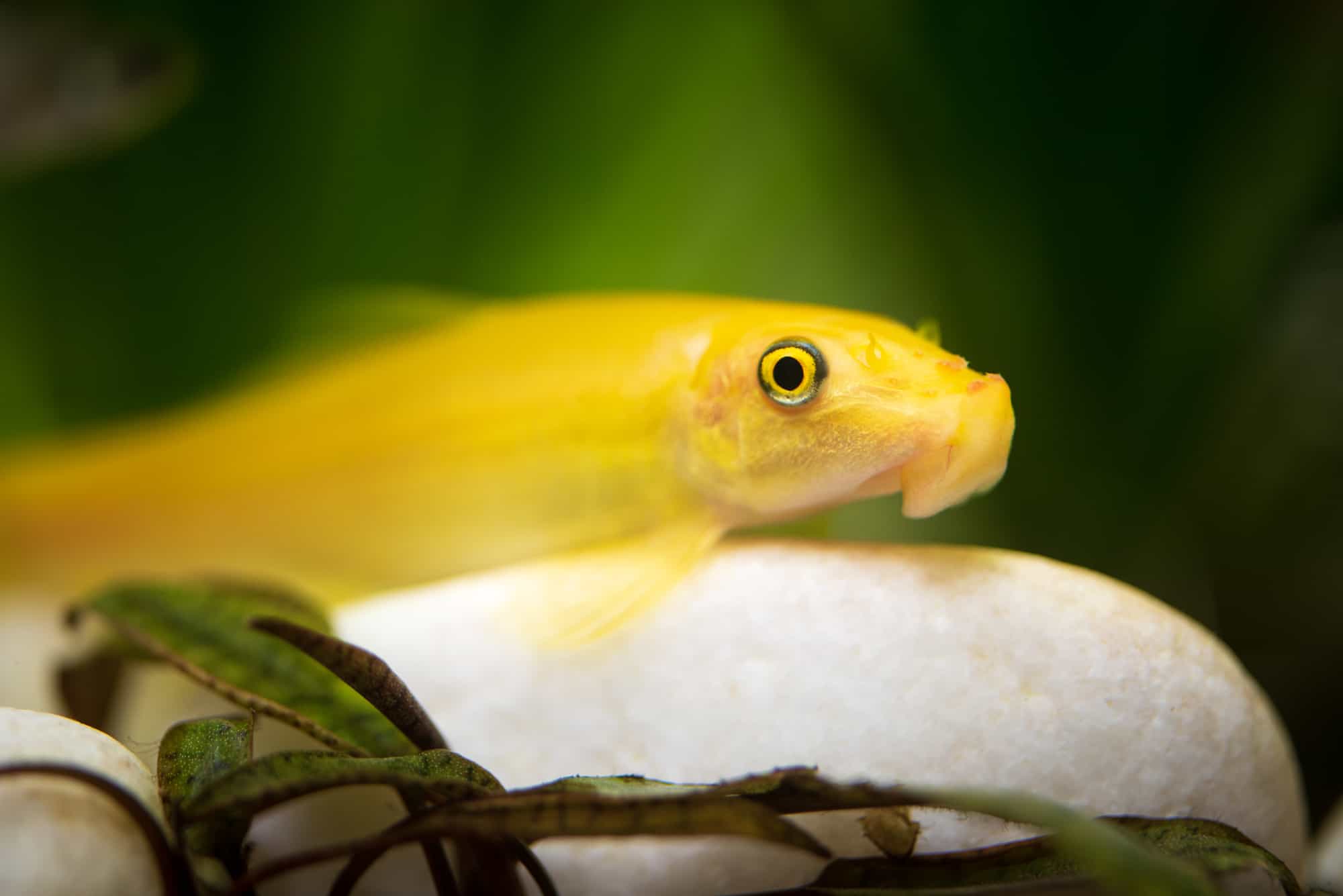
The Chinese Algae Eater, scientific name Gyrinocheilus aymonieri is native to Southeast Asia and Southern China, specifically Malay, Cambodia, Laos, Vietnam, and Thailand. The fish has been popular in the aquarium trade since it was first exported to Germany in 1956.
However, in its homeland, the Algae Eater is farmed as a food fish and is sold in local markets for use primarily for making prahok, a kind of fermented, salted fish paste that’s used as a condiment or seasoning in Cambodian cuisine.
The species is listed on the IUCN Red List as being of Least Concern, although it is considered to be threatened in Vietnam, Thailand, and China, where populations have declined.
Natural Habitat
The Chinese Algae Eater’s natural habitat is large and medium-sized lakes, rivers, and flooded fields where the fishes attach themselves to rocks, using their specially adapted “sucker” mouth to remain securely in position against the flow.
The fish prefer clear, shallow waters with a moderate flow, migrating to deeper waters seasonally. In nature, these waters are exposed to the sunlight, and the substrate is coated with a dense biofilm and algae on which the fish graze.
Appearance
Chinese Algae Eaters have long bodies and underslung mouths that form a sucker, which the fishes use to anchor themselves to rocks in fast-flowing water.
These fish are quite plain, varying in color from a yellowish-brown to pale gray with a black stripe running from the fish’s nose to its tail. Sometimes, you’ll see black spots on the base of the caudal and dorsal fins and along the fish’s back.
There are several color morphs, including the popular Golden Chinese Alga e Eater, marble, albino, and lecustic forms, all of which have characteristic bright yellow eyes.
Mistaken Identity
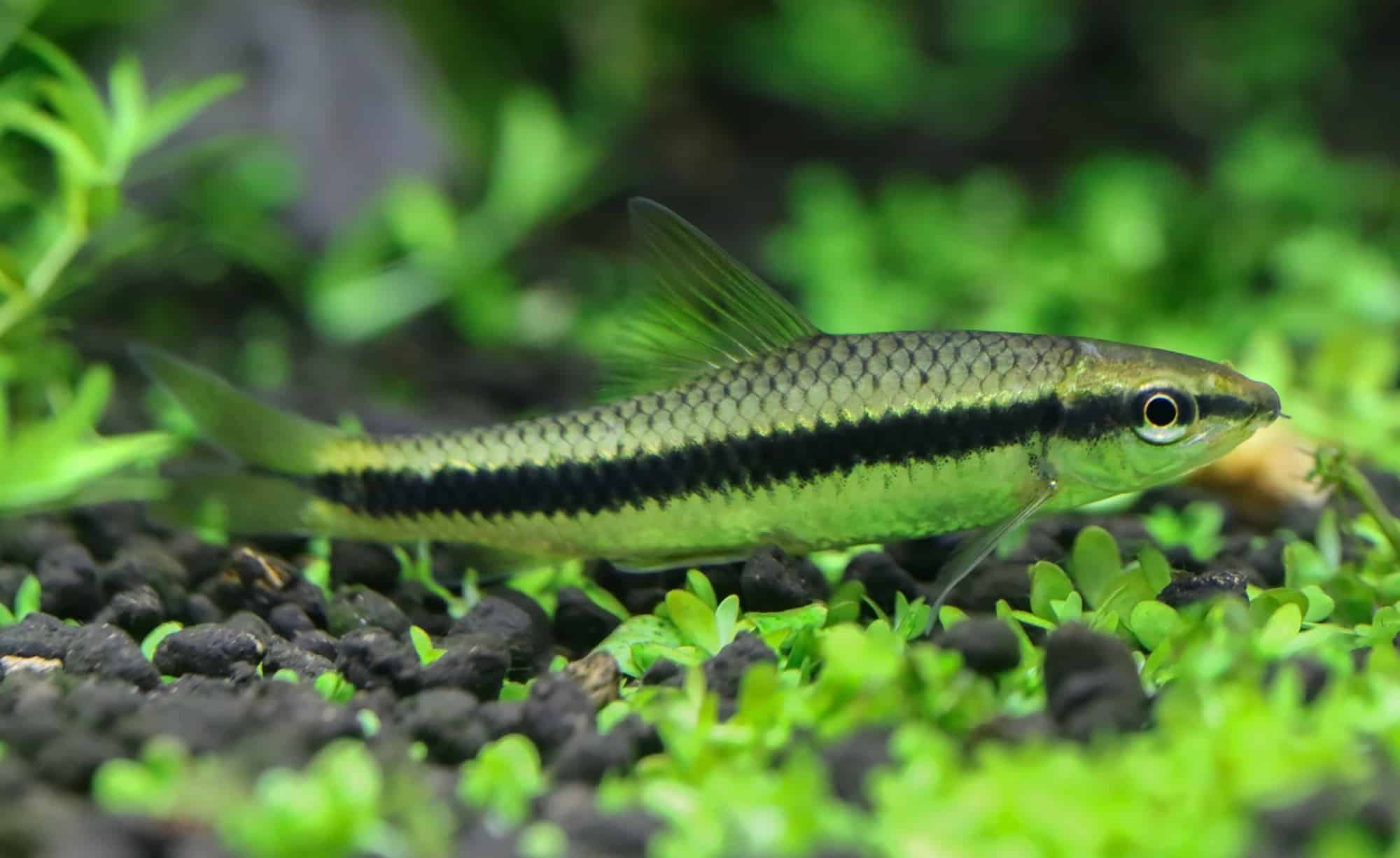
There are a few similar-looking fish species that are mistaken for the Chinese Algae Eater, including:
- Siamese Algae Eaters (Crossocheilus atrilimes and Crossocheilus langei).
- Flying Fox (Epalzeorhynchos kalopterus).
- Cambodian Logsucker (Garra cambodgiensis).
Although the species look similar and are both algae eaters, the Siamese Algae Eater will consume a wider range of algae species and are generally more expensive to buy. Also, this fish lacks the suckermouth of the Chinese Algae Eater.
Size
The Chinese Algae Eater typically grows to a maximum of between four and five inches long in captivity, although wild specimens often reach 11 inches.
Life Expectancy
These fish have a life expectancy of between five and ten years if properly cared for in captivity.
Activity Level/Temperament
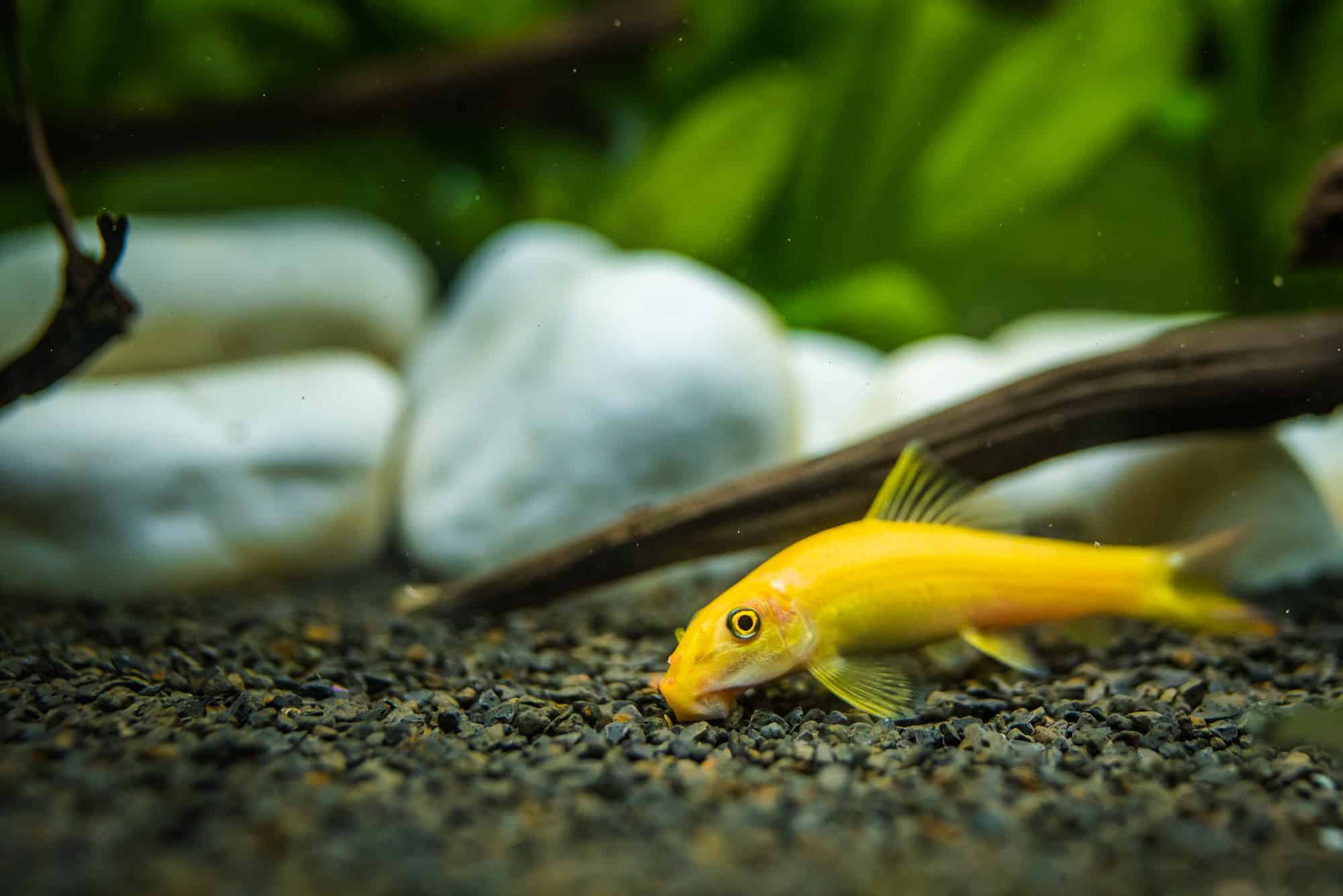
The Chinese Algae Eater is a confirmed loner, preferring to spend their time alone, foraging around at the bottom of the tank and attaching themselves to algae-covered surfaces to feed.
You won’t get much entertainment value from these fish, although they are useful for helping to keep the tank clean.
Compatibility And Tankmates
As juveniles, Chinese Algae Eaters make good community fishes. They tend to mind their own business, eating algae and foraging around the bottom of the tank. However, as they mature, the fish can become somewhat territorial, and they have been known to harass their tankmates.
The best tankmates for these fishes are fast-swimming species that can get out of the way easily. Suitable companions for the Chinese Algae Eater include characids, cyprinids, and African cichlids that tend to stick to the water column’s upper areas.
Other peaceful bottom-dwellers, such as Corydoras catfish are likely to be picked on, as are snails and Japanese Algae Eater shrimps that will be viewed as competitors for food, specifically, algae.
There are no reports of Chinese Algae Eaters eating other fish.
Feeding
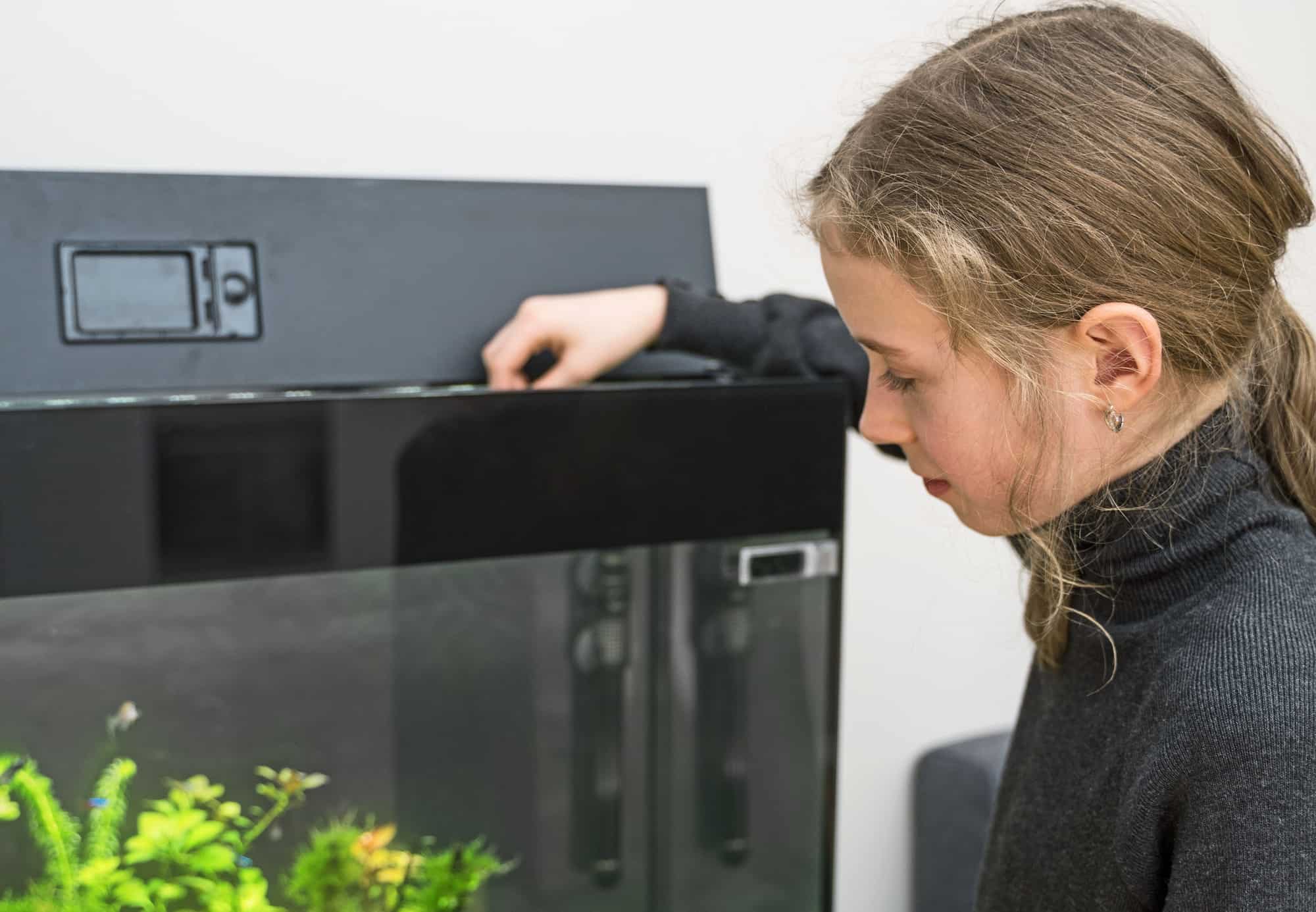
In nature, Chinese Algae Eaters are omnivorous aufwuchs grazers. They eat algae, phytoplankton, zooplankton, insect larvae, and periphyton, (a mixture of small bacteria, detritus, and algae.) In captivity, you can keep your fish happy, healthy, and long-lived by replicating that diet as closely as possible.
What To Feed The Chinese Algae Eater
As juveniles, Chinese Algae Eaters can be fed a diet of algae and vegetable matter, supplemented with small amounts of protein in the form of flake and live foods. As the fish mature, they will eat small crustaceans, as well as sucking the slime coat of other fishes.
In addition to high-quality flake food and algae wafers, your fish will appreciate some crushed spinach or lettuce, shelled peas, chopped fruit, and cucumber supplemented with frozen or fresh brine shrimp, daphnia, and bloodworms.
How Much And How Often To Feed
The quantity and frequency of feeding your algae eaters depend on the amount of algae that are growing in the tank. In general, Chinese Algae Eaters do best when they are fed several times daily. Offer only as much food as the fish will eat in a couple of minutes.
Tank Requirements
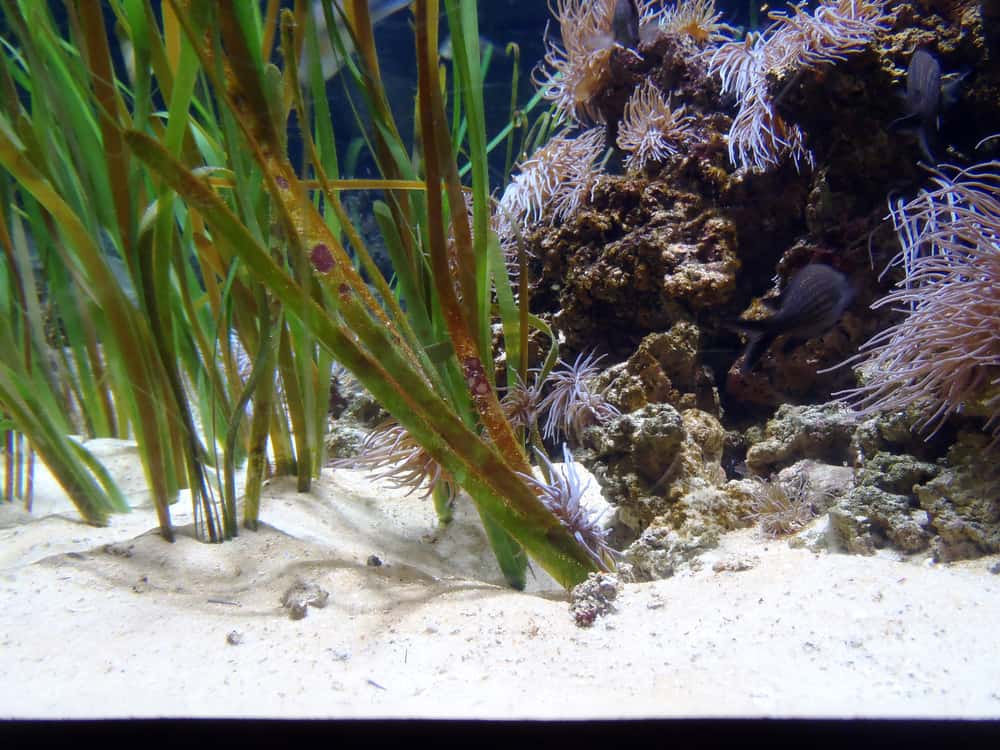
These fish are pretty hardy and adaptable, although they do need pristine water, so it’s best to introduce them to a mature, cycled tank that has a well-established biological filter system.
Tank size
Chinese Algae Eaters spend almost all of their time swimming around the bottom of the tank. I recommend a 30-gallon tank as a minimum for a juvenile, although if you want to keep adults or a small group of specimens, a 50-gallon aquarium or larger is best.
The best choice of tank shape is a long, shallow one. As the fish are bottom-dwellers, they don’t need a very deep aquarium, but they do appreciate plenty of swimming and foraging space.
These fish can jump, so make sure that the tank has a tight-fitting lid or at least a cover slide.
Tank Setup
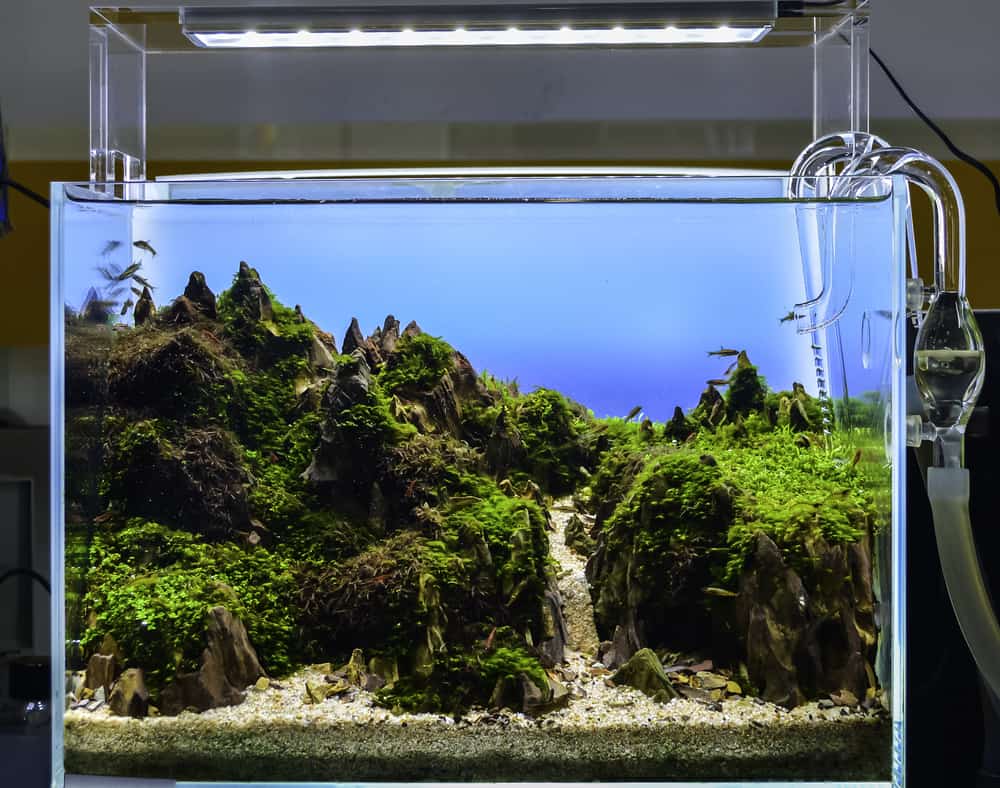
Substrate
You can use any kind of substrate, although I suggest a soft sand and gravel mix, as that replicates the fish’s natural habitat and is less abrasive than gravel alone, so it’s less likely to injure the fish’s soft belly as it swims across it.
Decorations
Algae Eaters like plenty of live plants in the tank. Add a scattering of smooth rocks and pebbles on which algae can grow, and provide a few caves, driftwood, and twisted roots where the fish can hide.
Habitat Requirements
Filtration
In nature, Chinese Algae Eaters live in free-flowing water where oxygen levels are quite high. So, an undergravel filtration system is a good choice for your tank, as that will oxygenate the water and reduce fish waste. To create a proper current throughout the tank, add a canister filter or powerhead.
Water Parameters
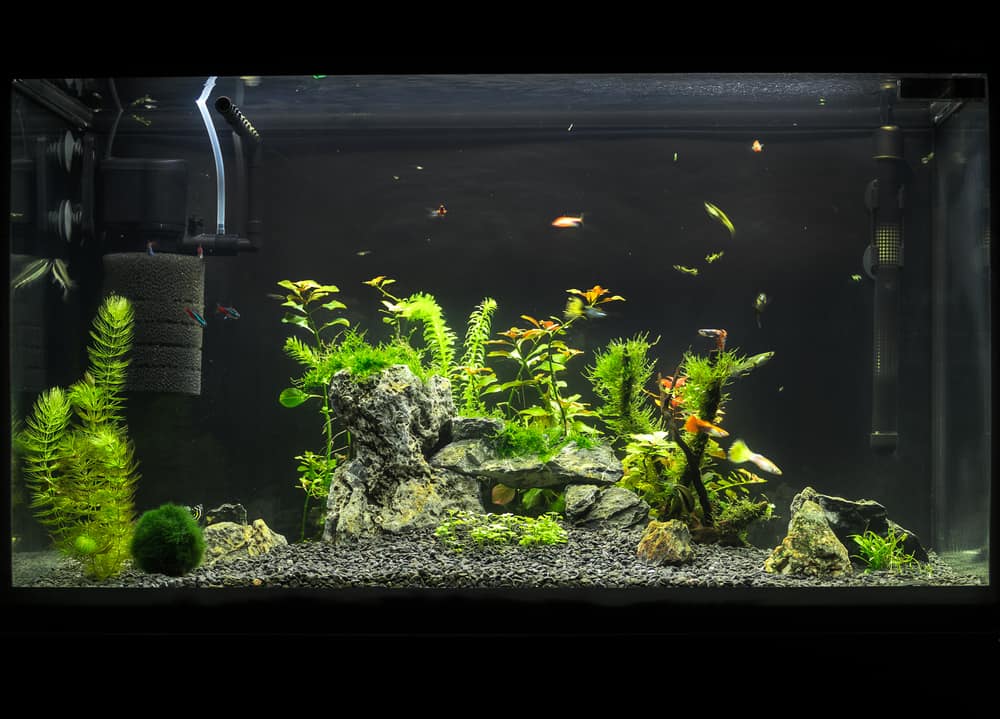
Water Temperature
Chinese Algae Eaters are tropical fish, so the tank’s water temperature should be kept within the 77° to 82° Fahrenheit range.
Water Hardness And pH Range
The water hardness should be between 5 and 19 dGH, and the pH range should be from 6.0 to 8.0.
Lighting
These fish prefer moderate to normal lighting levels.
Tank Maintenance
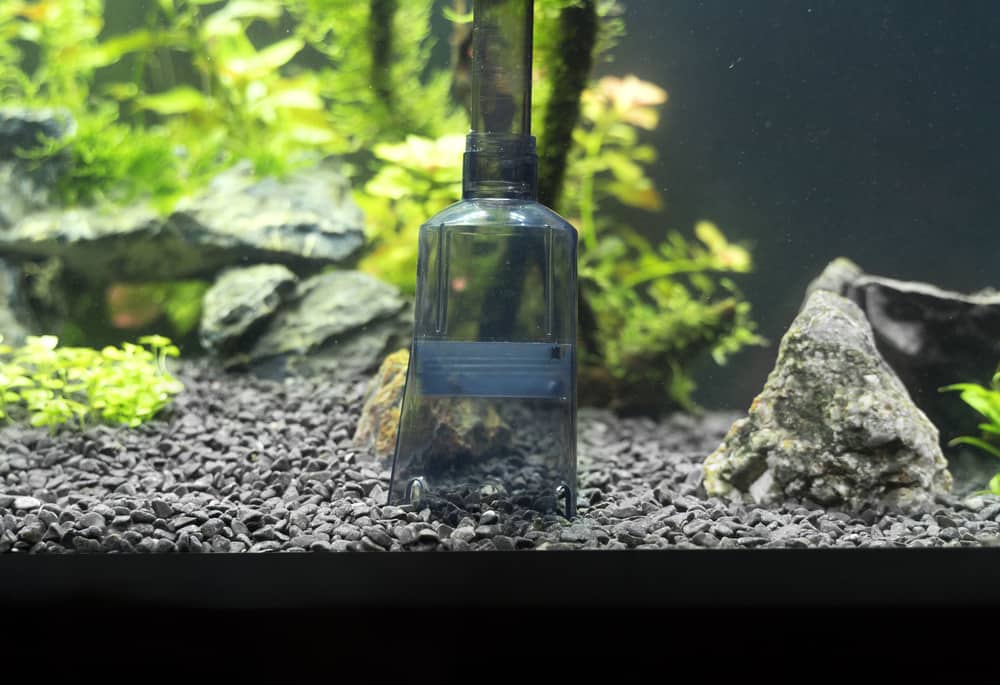
Chinese Algae Eaters are relatively straightforward to care for, provided that you give your fish clean, well-oxygenated water.
Remove fish waste and decomposing organic matter from the tank and substrate each week by using an aquarium vacuum, and change 25% to 30% of the aquarium water. That will keep the levels of ammonia, nitrites, and nitrates down, maintaining a healthy environment for your fish. Remember to rinse the filter media in tank water to get rid of sludge, and change the filter cartridges when required.
Setting Up The Aquarium
First of all, assemble everything that you need for your tank:
- Sand /gravel substrate
- Lighting unit
- Filtration system
- Heater
- Aquarium thermometer
- Decorations
- Plants
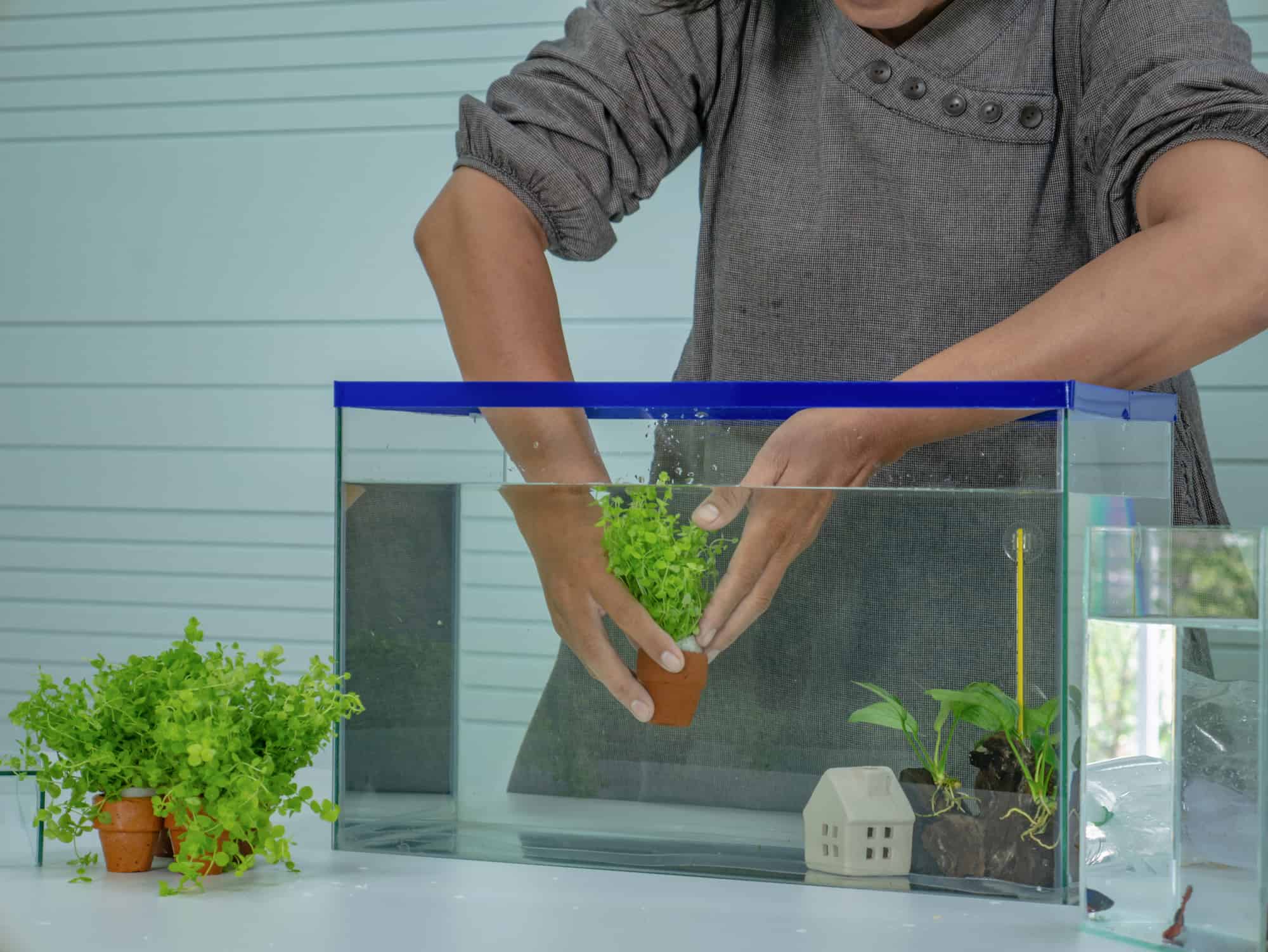
How to set up your fish tank:
- Before adding the substrate to the tank, rinse it under running water to remove dust and dirt. Once the water is running through clear, you can put the substrate into the tank to a depth of around two to three inches.
- Fit the filter and heater, but don’t turn them on yet.
- Put an upturned dish on the sand or gravel. Fill your tank with tap water, pouring the water over the dish so as not to disarrange the substrate. If you plan on cycling the tank before adding your fish, don’t add a water conditioner to the water. Untreated tap water contains ammonia, which is necessary to kick off the nitrogen cycle and get your biological filter working properly.
- Add your tank decorations, rinsing everything first to get rid of dust.
- Trim broken stems, dead leaves, and straggly growth from your plants, and add them to the tank. Remember to leave plenty of clear space on the substrate for the bottom-dwelling Algae Eaters to swim. For that reason, low-growing, carpet species, such as Dwarf hairgrass are not a good choice.
- Turn on the filtration system and the heater, and allow the aquarium to cycle for at least ten days before you add your fishes.
- To check that the tank is ready to receive your livestock, test the water to make sure that it doesn’t contain any ammonia or nitrites. Low levels of nitrates are to be expected, and that’s fine, as long as the levels don’t exceed 20 parts per million (ppm).
Health And Disease
The Chinese Algae Eater has a scaleless belly, and that can make these fishes prone to diseases. Also, the species is very sensitive to many commonly-used fish medications, so you will need a separate quarantine tank if you need to treat your other fishes.
Signs Of Good Health
Chinese Algae Eaters are generally active fish that spend most of their lives grazing on algae and swimming around the bottom of the tank. These are quite curious fishes too, exploring their surroundings in a never-ending search for algae to eat.
Red Flags
There are a few red flags that will alert you to health problems that could be brewing, including:
- Loss of appetite, not eating algae from surfaces in the tank.
- Lethargy.
- Spending time at the surface of the water.
- Swellings, ripped fins.
- Flicking or rubbing against aquarium decorations and the substrate.
Common Health Issues And Treatment
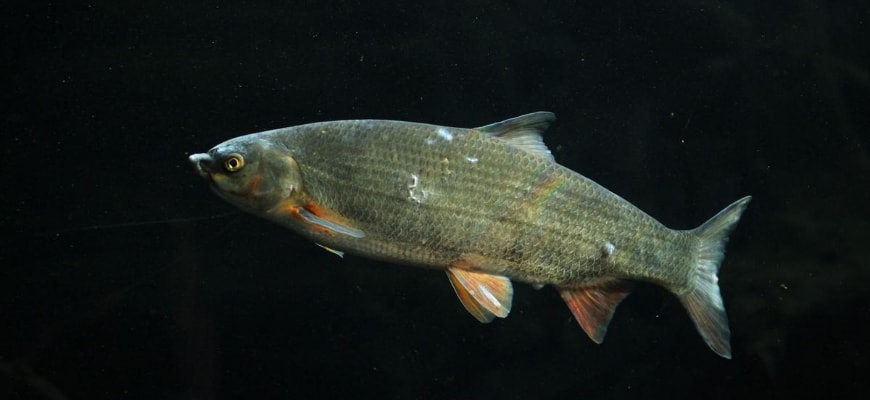
Health Issue
Ich (White Spot Disease)
Symptoms or Causes
Ich is an extremely common fish disease that’s caused by a protozoan parasite, Ichthyophthirius multifiliis. Fish with Ich develop tiny white spots across the body, fins, and gills, flick or rub against tank surfaces, décor, and the substrate, and breathe rapidly.
Suggested Action
Raise the water temperature to 82o F for three days, and treat using an over-the-counter, White Spot Disease remedy.
Health Issue
Skin and gill flukes
Symptoms or Causes
Skin and gill flukes are parasites that attach themselves to the fish’s gills or body. Infected fish develop reddened gills or skin, rub their bodies on the substrate and tank décor, secrete excess mucus, and breathe rapidly.
Suggested Action
Correct tank water conditions, treat with a condition-specific drug as directed.
Health Issue
Fungal infections
Symptoms or Causes
White cottony growths.
Suggested Action
Quarantine fish; dose water with an antifungal medication.
Health Issue
Bacterial infections
Symptoms or Causes
Reddened skin, cloudy eyes, skin ulcers.
Suggested Action
Quarantine affected fish; treat water with antibacterial medication.
Breeding
The Chinese Algae Eater is extremely difficult to breed, and there are only a few reports of successful home-spawning. Most of the fish that you see in fish stores have been bred in large commercial fish hatcheries, where hormonal agents have been used.
Availability
Chinese Algae Eaters are commonly available from good fish stores and online, priced at just a few dollars each for a juvenile specimen.
As there are several fish species that look similar to the Chinese Algae Eater, mislabeling is common, and you don’t want to finish up buying the wrong fish! So, be sure to look for the fish’s scientific name, Gyrinocheilus aymonieri, before you part with your cash.
Product Recommendations
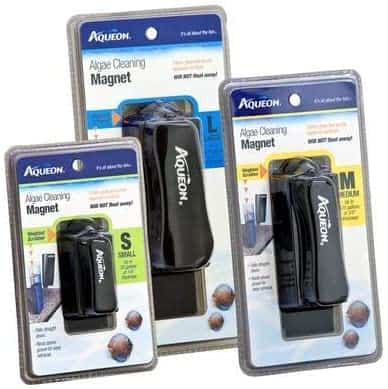
- Rectangular, shallow fish tank (minimum size 50 gallons)
- Filtration system
- Heater
- Water conditioner
- Lighting unit
- High-quality tropical flake food
- Selection of frozen foods
- Algae wafers
- Sandy, gravel-mix substrate
- Flat stones, pebbles, driftwood
- Books on fishkeeping
- A fishnet
- Aquarium thermometer
- Aquarium vacuum or siphon cleaner
- Algae magnet
In Conclusion
I hope you enjoyed our guide to caring for the Chinese Algae Eater.
Please tell us what you think about this fascinating, helpful fishes in the comments box below. And, don’t forget to share the article with your fish-loving friends if you found our guide helpful!
